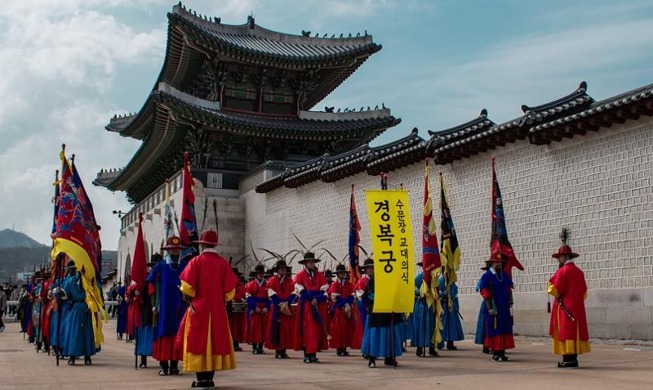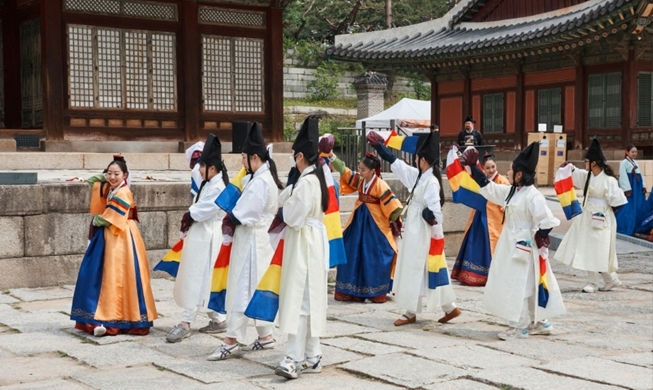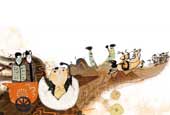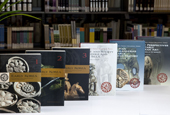-
 Korea.net's 24-hour YouTube channel
Korea.net's 24-hour YouTube channel- NEWS FOCUS
- ABOUT KOREA
- EVENTS
- RESOURCES
- GOVERNMENT
- ABOUT US
Recently discovered traces of red bean have been found to be some of the oldest such archeological samples in Northeast Asia.
After analyzing earthenware excavated in Osan-ri, Yangyang County, Gangwon-do (Gangwon Province), researchers realized that the traces date back to the Neolithic Era, some 7,000 years ago, announced the Natural Research Institute of Cultural Heritage, part of the Cultural Heritage Administration (CHA), on October 14.
In addition, archaeologists also came across a piece of clay found in Songjeon-ri, Yangyang County, that contains traces of insects from the mid-Neolithic Age.
The institute found two traces of red bean in the earthenware discovered in Osan-ri, part of its biological archeology research into prehistoric farming. The traces were formed as the beans were pressed against the earthenware. One of the two traces belongs to the early Neolithic era and is 2.2 millimeters in diameter. The other is from the mid-Neolithic era and is 2.8 millimeters in diameter. They are both smaller than present red beans, which are 4 to 8 millimeters in diameter.

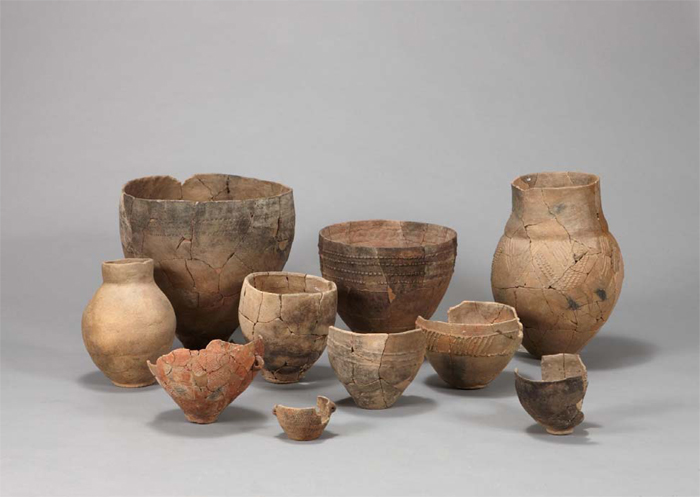
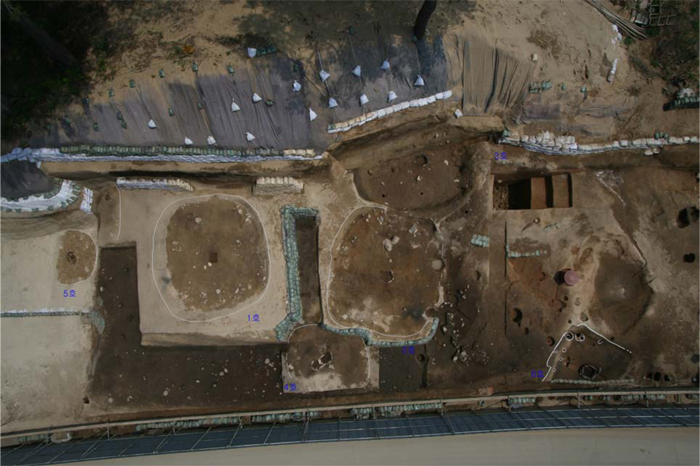
The institute carbon dated the surface of the earthenware at the U.S.-based Beta Analytics and it was estimated to be from 7,314 to 7,189 years ago. In the past, researchers presumed that farmers in Korea, China and Japan started cultivating red beans 5,000 years ago. With the new discovery, the cultivation of red beans is believed to have begun 7,000 years ago, nearly 2,000 years earlier than previous estimates. Researchers also discovered that red beans have gradually become larger in the early- to mid-Neolithic Era during the process of cultivation. This shows the way in which wild plants turned into new species in terms of their genetic quality and shape by being selectively farmed.
Researchers also found traces of mid-Neolithic Age insects on a piece of clay unearthed in Songjeon-ri, Yangyang County. The traces were formed, again, as the insects were pressed against the earthenware. They belong to the order of Hemiptera, a type of insect known as "true bugs." It is the first discovery of traces of such cicadas or aphids related to farming in the Neolithic Era. Also in the earthenware, there were many traces of pieces of millet, guinea grass and perilla seeds.
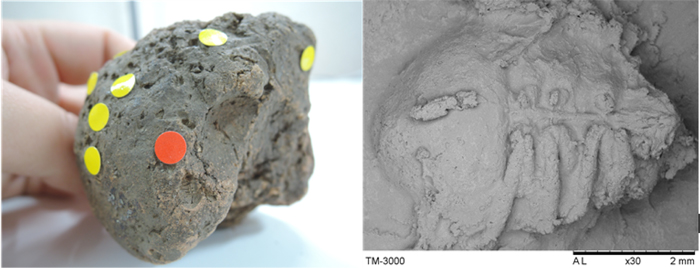
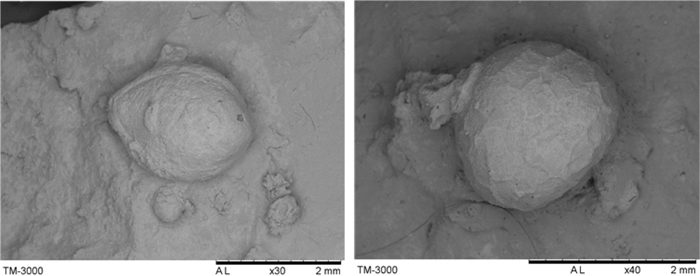
"The findings show that millet, guinea grass and perilla seeds started being cultivated in the mid-Neolithic Era and are important pieces of evidence for Neolithic-era dietary researchers," said a scientist at the institute.
By Limb Jae-un
Korea.net Staff Writer
Photos courtesy of the CHA
jun2@korea.kr

After analyzing earthenware excavated in Osan-ri, Yangyang County, Gangwon-do (Gangwon Province), researchers realized that the traces date back to the Neolithic Era, some 7,000 years ago, announced the Natural Research Institute of Cultural Heritage, part of the Cultural Heritage Administration (CHA), on October 14.
In addition, archaeologists also came across a piece of clay found in Songjeon-ri, Yangyang County, that contains traces of insects from the mid-Neolithic Age.
The institute found two traces of red bean in the earthenware discovered in Osan-ri, part of its biological archeology research into prehistoric farming. The traces were formed as the beans were pressed against the earthenware. One of the two traces belongs to the early Neolithic era and is 2.2 millimeters in diameter. The other is from the mid-Neolithic era and is 2.8 millimeters in diameter. They are both smaller than present red beans, which are 4 to 8 millimeters in diameter.

(Left) A trace of red bean found in earthenware discovered in Osan-ri, Yangyang County. (Right) An enlarged view of the sample.


(Top) Samples of earthenware are discovered in Osan-ri, Yangyang Country. (Bottom) An aerial view of the excavation site in Osan-ri.
The institute carbon dated the surface of the earthenware at the U.S.-based Beta Analytics and it was estimated to be from 7,314 to 7,189 years ago. In the past, researchers presumed that farmers in Korea, China and Japan started cultivating red beans 5,000 years ago. With the new discovery, the cultivation of red beans is believed to have begun 7,000 years ago, nearly 2,000 years earlier than previous estimates. Researchers also discovered that red beans have gradually become larger in the early- to mid-Neolithic Era during the process of cultivation. This shows the way in which wild plants turned into new species in terms of their genetic quality and shape by being selectively farmed.
Researchers also found traces of mid-Neolithic Age insects on a piece of clay unearthed in Songjeon-ri, Yangyang County. The traces were formed, again, as the insects were pressed against the earthenware. They belong to the order of Hemiptera, a type of insect known as "true bugs." It is the first discovery of traces of such cicadas or aphids related to farming in the Neolithic Era. Also in the earthenware, there were many traces of pieces of millet, guinea grass and perilla seeds.

Insect traces are found on a piece of clay unearthed in Songjeon-ri, Yangyang.

(Left) Traces of guinea grass are found in earthenware in Songjeon-ri, Yangyang. (Right) Traces of perilla seeds are discovered in Osan-ri.
"The findings show that millet, guinea grass and perilla seeds started being cultivated in the mid-Neolithic Era and are important pieces of evidence for Neolithic-era dietary researchers," said a scientist at the institute.
By Limb Jae-un
Korea.net Staff Writer
Photos courtesy of the CHA
jun2@korea.kr




